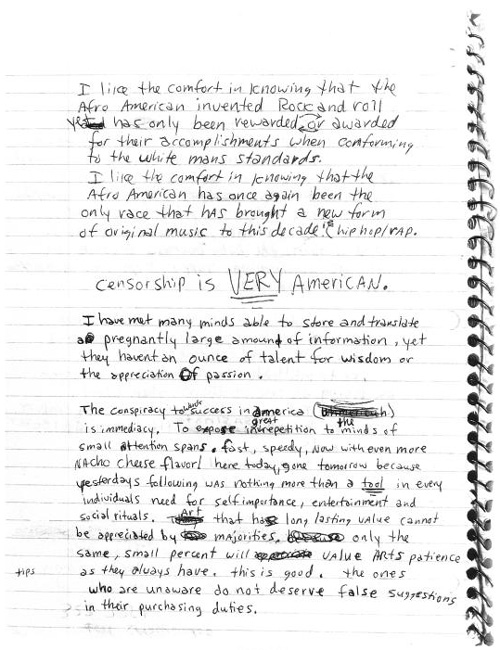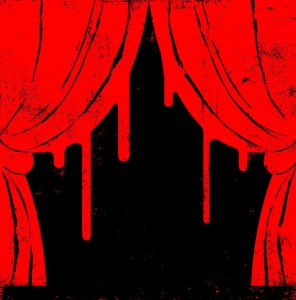February 19, 2013 at 5:05 pm
The deadline for Specialty housing is this Thursday, February 21st. For anyone interested in living in the Core House next year it's important to apply before then. The application is very simple, and should take only a few minutes to complete, and it involves no obligation on your part. In other words, it simply opens up the option of living in the House if those plans to live in StuVi 2 happen to fall through. You can find the application online at http://www.bu.edu/specialty/apply.
The House is in South Campus, 141 Carlton Street, five minutes from CAS, and has a generous supply of singles and bathrooms, a great common room, a nice porch (in case the weather ever gets warm) and a great community. Feel free to contact the RA, Caitlin Outterson at coutterson@gmail.com to find out more or to get a tour of the house.
By CAS Core Curriculum
|
Posted in Uncategorized
|
February 19, 2013 at 12:11 pm
This spring, the class of CC204 has been looking at inequality in terms of race, gender, social class and financial standing.
"Poverty in America" has provided a very useful tool to investigate inequality in terms wages across the United States, the Living Wage Calculator: http://bit.ly/Ykr2NZ
Simply enter your home town and find out how much money you need to be making to be "living well" there!
By mdimov
|
Posted in Academics, Curriculum, Great Ideas
|
Tagged CC204, finance, Inequality, life, money, social science, society, stability, wages, well
|
February 18, 2013 at 3:34 pm
Until recently, Winston Churchill was only known to have written one poem as a schoolboy. Now, a 10-verse poem he wrote while serving in the army has emerged, from 1898 when he was 24 years old.
Two of the 10 stanza of the work, titled 'Our Modern Watchwords', read:
The shadow falls along the shore
The search lights twinkle on the sea
The silence of a mighty fleet
Portends the tumult yet to be.
The tables of the evening meal
Are spread amid the great machines
And thus with pride the question runs
Among the sailors and marines
Breathes there the man who fears to die
For England, Home, & Wai-hai-wai.
For the full article discussing this poem, visit http://bit.ly/W6cdir
By mdimov
|
Posted in Announcements, Art, Great Personalities
|
Tagged adult, ambition, army, Britian, celebration, Churchill, Empire, poem, power
|
February 18, 2013 at 3:23 pm
The Core presents an article by Mark Dery, in which he discusses Gérard de Nerval and his infamous "pet" lobster. Dery starts off by quoting Nerval himself:
“Why should a lobster be any more ridiculous than a dog? Or a cat, or a gazelle, or a lion, or any other animal that one chooses to take for a walk? I have a liking for lobsters. They are peaceful, serious creatures. They know the secrets of the sea, they don't bark, and they don't gobble up your monadic privacy like dogs do. And Goethe had an aversion to dogs, and he wasn't mad!" — Gérard de Nerval, when asked why he kept a lobster as a pet and walked it on a leash.
Dery also quotes our very own Core Professor Jelle Atema on the matter:
Dr. Atema wonders if Nerval's lobster was really a crayfish. In an e-mail to me, he speculated, "People sometimes confuse (marine) lobsters and (freshwater) crayfish. If it were a freshwater crayfish, it could take an occasional dunk in the Palais pond. Crayfish can make short overland excursions across moist terrain as do eels and some catfishes. The European lobster could be one- to two-feet long, a memorable appearance. In Europe, the crayfish would be no more than six inches long, which would not inspire lobster lore." Then again, "as Ovidius said: rumors grow with time, thus turning a crayfish into a lobster," explains Atema, adding, "a crayfish is more likely to have been a 'pet' with a home tank of fresh water and a palace pond to wet his gills, now and then, during strolls on a blue ribbon leash."
For the full article, visit http://bit.ly/151PN7S
By mdimov
|
Posted in Academics, Community, Core Lecturers, Great Personalities
|
Tagged article, Core Professor, Jelle Atema, lobster, Nerval, quote, surrealist
|
February 14, 2013 at 1:03 pm
Relating to CC202's study of Jane Austen's Pride and Prejudice, the Core offers an article by Ron Rosenbaum, titled Is Jane Austen Overhyped?- Evaluating her literary merit amid the Anniversary reverence.
The subject it deals with is important, and relevant to all classics- how much good does exaggerated celebration their anniversaries really do? Here is a sample, in which Ron Rosenbaum shares his thoughts:
It’s not that she’s overrated. It’s that she’s in dire jeopardy of being overhyped—and dumbed down in the process...
I’ve begun to feel—in the midst of the tsunami of schlocky, rapturous, over-the-top, wall-to-wall multiplatform celebration of the 200thanniversary of Pride and Prejudice—that it’s all a bit too much. Something quiet and true about Austen is being lost in the trumpet blasts and the spin-offs.
For the full article, visit http://slate.me/Xbeb1f
By mdimov
|
Posted in Academics, Art, Community, Curriculum, Great Ideas, Great Personalities
|
Tagged celebration, critic, dumb, exaggeration, excess, hype, Jane Austen, pride and prejudice
|
 For the full article, visit http://bit.ly/WRn95U
For the full article, visit http://bit.ly/WRn95U
